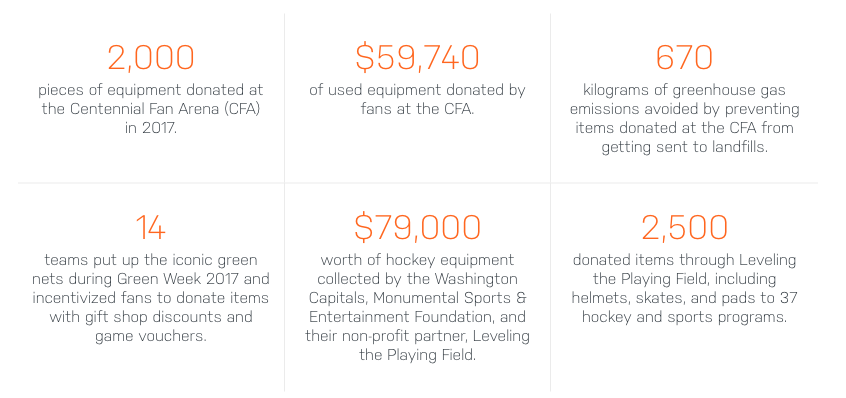

It goes without saying that many winter sports depend on winter weather. But in our ever-warming world, activities that depend on lakes, rinks and other outdoor arenas staying ice-cold are coming under increasing threat.
That’s why the National Hockey League is going green.
“Hockey was born on frozen ponds—climate change is impacting access to our sport outdoors,” the league said in its second sustainability report released Wednesday.
Many professional hockey players first learn to skate outdoors, as Winnipeg Jets player Mark Scheifele shares in the clip below:
The @NHLJets @markscheifele55 can't say enough about his love for "the purest form of hockey": the outdoor rink. #NHLGreen https://t.co/9PpnaYEqOA
— NHL (@NHL) March 29, 2018
But in the coming decades, the NHL noted, the average length of the skating season may shrink by one-third in eastern Canada and by 20 percent in western Canada due to rising global temperatures.
“Our environmental mission is to ensure the sport of hockey thrives for future generations,” the report said.
The NHL, which has 30 clubs throughout the U.S. and Canada, has committed to minimizing its environmental footprint by focusing on these key areas: reducing carbon emissions, supporting smart energy, conserving water and reducing waste.
This year’s report builds on commitments outlined in the NHL’s first sustainability report in 2014—a groundbreaking move in the sustainable sports movement, as was the first time a major sports league in North America published such a document.
The NHL and the Natural Resources Defense Council teamed up to create the league’s environmental program. Since the 2014 report’s release, the NHL has seen a 2-percent year-over-year reduction in CO2 emissions from 2014 to 2016, from 189,503 to 182,355 metric tons. It also counterbalanced 963,200 megawatt hours of energy since 2014 through the investment of renewable energy credits generated from U.S. wind and Canadian biomass.
NHL’s 2018 sustainability report
“Hockey is a very energy-intensive sport,” Omar Mitchell, NHL vice president for corporate social responsibility, told USA TODAY. “Our analysis shows about 66 percent of our carbon footprint is attributed to energy usage to create an ice sheet. So what we are trying to do is to promote innovations that will lower energy consumption within our buildings.”
According to the report, all of the NHL’s sports facilities have begun switching to LED lighting and started upgrading to more water-efficient fixtures. Approximately half of NHL arenas currently compost and several clubs use aerobic digesters to break down food scraps on site. Six NHL arenas currently recapture waste heat and reuse it to melt ice or heat interior spaces. Three arenas have on-site solar panels.
The NHL also aims to mobilize its fan base to champion environmental issues, “both to support its mission of helping the sport thrive and to build stronger communities across the globe,” the report said.
For instance, the Recycle the Game program encourages fans to donate used equipment to sports and hockey programs, instead of tossing the items into landfills.
“We can only do so much at the league level and on our clubs and our arena partners to impact our carbon footprint,” Mitchell told USA TODAY. “But if we can influence the 76 million fans who watch our sport, that’s where you’re going to have real change.”
Recycle the Game

 233k
233k  41k
41k  Subscribe
Subscribe 

